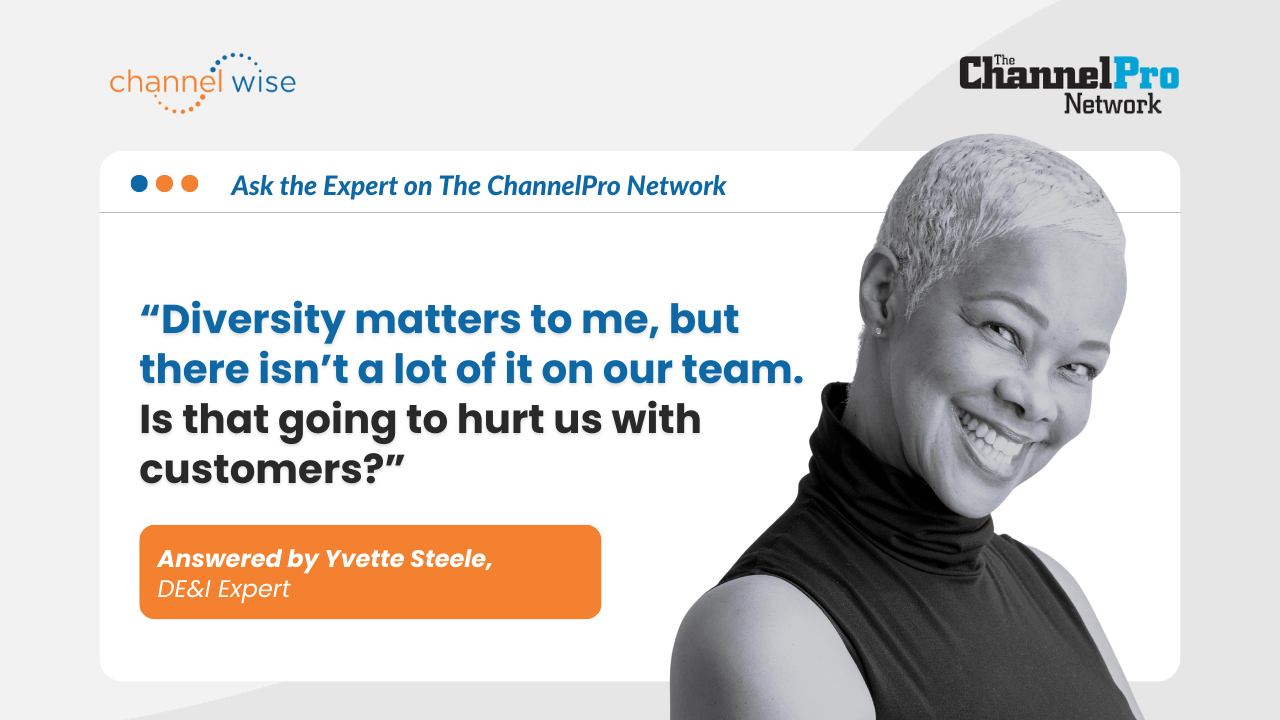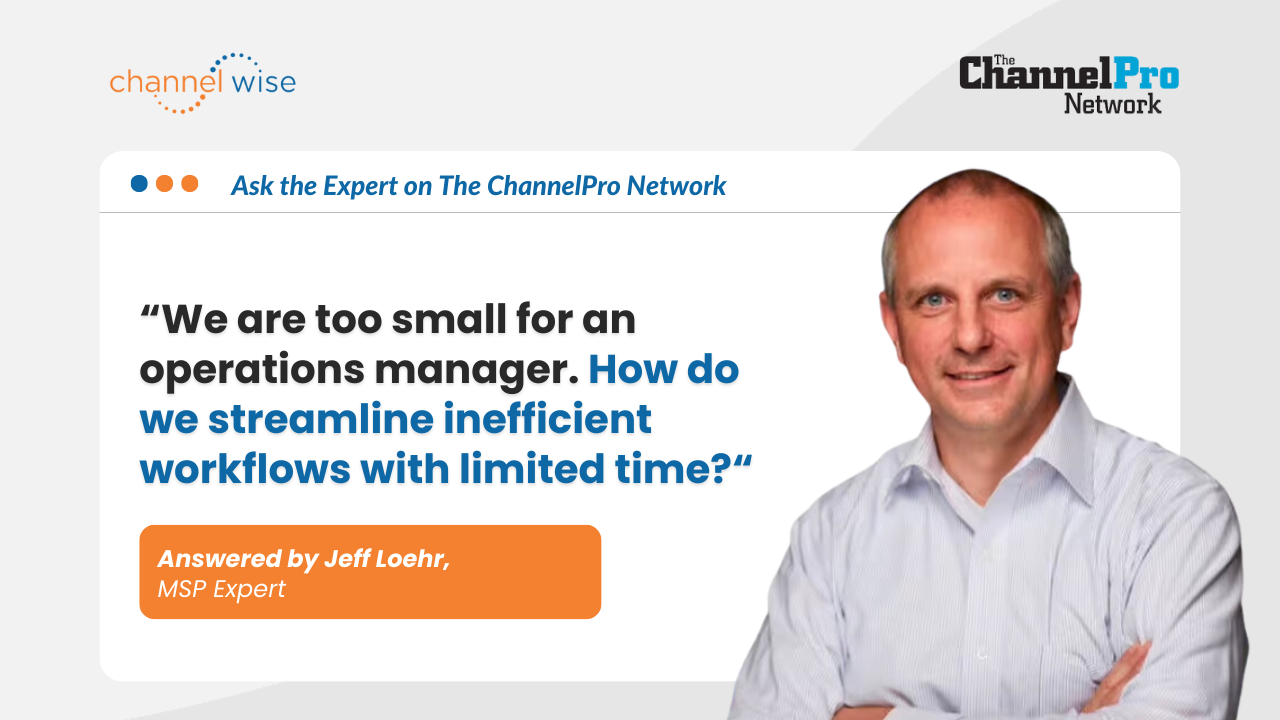Advisory Boards: What You Need to Know and How to Start One with Annette Taber
Replay:
Are you a business leader seeking to navigate challenges, drive growth, and make strategic decisions with confidence?
The answer may lie in the establishment of an advisory board. These dynamic groups of experts provide valuable guidance, subject matter knowledge, and problem-solving capabilities that can transform your organization's trajectory.
In this episode of#AsktheExpert Live, Kathryn Rose, CEO & Founder of channelWise, interviewed Annette Taber, an expert in building successful advisory boards. Read on to discover how an advisory board can catalyze your business success.
Highlights
- Advisory boards serve as problem-solving thinking systems, providing guidance, expertise, and subject matter knowledge to address challenges companies may not have in-house.
- Key considerations for building a successful advisory board for a startup include structure and discipline, clarity of scope, board charter, independence among advisors, and selecting advisors fit for the specific challenges and objectives.
- Companies at different stages can benefit from forming advisory boards, with a sweet spot for formal boards typically being companies with a valuation of $15 million and above, involving paid advisors with relevant expertise.
What is the role of advisory boards?
The role of advisory boards is to serve as a problem-solving thinking system. They provide guidance, expertise, and subject matter knowledge to address challenges the company may not have in-house. Whether entering a new market, exiting a business, or engaging in a merger or acquisition, advisory boards offer the flexibility for companies to adapt and change as their needs evolve. Advisory boards are not decision-makers like governance boards, but they offer valuable insights and experience to support strategic decision-making.
How does an advisory board differ from a governance board?
Governance boards primarily focus on compliance and legal fiduciary responsibilities. They often have limited bandwidth to think strategically about the company's future. In recent trends, companies are forming formalized advisory boards to complement governance boards and offload some strategic planning and future-oriented thinking. Advisory boards provide guidance and expertise in areas such as cybersecurity, where the governance board may lack specialized knowledge. The collaboration between the two boards allows for a more comprehensive approach to decision-making and risk management.
What are the important considerations for building a successful advisory board for a startup?
Building a successful advisory board for a startup requires more intentionality than simply assembling a group of advisors. There are five key elements to consider:
- Structure and discipline: Many startups lack the resources to dedicate themselves to managing an advisory board effectively. Consistency in meetings and a disciplined approach to understanding the company's market state are crucial.
- Clarity of scope: Solving all of the company's problems with an advisory board is ineffective. It is essential to identify and focus on the primary drivers that need attention.
- Board charter: Developing a board charter that aligns with the scope of the advisory board is important. This charter drives the measurement of the board's success and can include assessments at the beginning and end of the year.
- Independence: It is advisable not to allow advisors to recommend other advisors for the board. Independence among advisors helps prevent the formation of cliques and fosters diverse perspectives.
- Fit for purpose: Selecting advisors who are fit for the specific challenges and objectives the startup aims to address is crucial. Bringing individuals onto the board based on their alignment with the charter and the areas the company needs to focus on is key.
Considering these five elements can greatly contribute to the success of an advisory board for a startup.
What types of companies should consider forming an advisory board?
Companies at different stages can benefit from forming an advisory board. In the early stages, informal advisory boards of volunteers, such as family, friends, and trusted individuals, are common. However, for a more formalized advisory board, which operates under the governance board, companies typically reach a certain level of maturity and valuation.
The sweet spot for formal advisory boards is often considered to be companies with a valuation of $15 million and above. These boards involve paid advisors with extensive experience and knowledge as senior executives. It is beneficial to look for individuals with relevant certifications and expertise in specific areas. Additionally, there are alternative options, such as customer advisory boards or project-based advisory boards, that can be considered depending on the company's needs and resources. The key is determining the right approach based on the company's size, stage, and goals.
Are advisory boards considered working boards where the advisors do the actual work?
No, advisory boards are not working boards in that sense. Unlike formal governance boards, where decisions are made and executed by the company's leadership, advisory boards are thinking systems and problem solvers. They provide advice, guidance, and expertise to help the company gain confidence in decision-making processes.
The value of an advisory board is measured through assessments such as growth score assessment and value chain assessment, which are conducted at the beginning and end of the year to evaluate the impact and value the advisory board brings to the company. The advisors do not perform the day-to-day work but offer insights and recommendations to inform the company's strategic direction.
Is it common to have project-based boards?
There has been a notable increase in project-based advisory boards, with a 52% rise since 2019, according to the advisory board center. This trend reflects that companies often lack the necessary headcount and bandwidth to focus on the future while managing day-to-day operations.
In project-based advisory boards, the focus is on specific areas or challenges. The duration can vary, such as a three-month project to accelerate growth in a particular area. The board must understand the problem and propose solutions through board reports provided by the business before the meetings. Closing the feedback loop and reporting on the outcomes and actions taken based on advisory board input is an important aspect of the process. This ensures accountability and demonstrates the impact of the advisory board's contributions.
When setting up advisory boards, what budget range should companies consider?
The budget range typically ranges from $2,000 to $5,000 per board meeting. Board meetings usually occur once a quarter and last about four hours or half a day. This translates to an annual cost of approximately $8,000 to $20,000 per person. It is worth noting that many experienced advisors are transitioning away from traditional corporate positions and seeking alternatives. BoardSwap’s Advisors Concierge is a great example, as it provides access to a pool of advisors. However, the choice of advisors and their associated fees ultimately lies between the business and the advisors themselves.
What made you decide to join channelWise as an expert?
I joined channelWise because I recognized the value it provides in offering quick, practical, and tactical advice. Sometimes businesses have specific questions or need immediate feedback without needing long-term engagement. channelWise fills that need by providing a service where I can offer quick answers and insights. Additionally, I engage in consulting, advisory boards, and facilitate peer groups, depending on the specific needs and objectives of the company. It's about providing the right solution to address the challenges the company is facing.
Are there any final thoughts or considerations for setting up an advisory board?
An advisory board provides the confidence and expertise needed to make informed decisions and take action. It is crucial to understand the role of an advisory board, including the time required to manage it, effectively utilize the feedback received, and implement the recommendations. Ensuring alignment between the internal team and the advisory board is essential to avoid frustration and maximize the benefits of the advisory board's insights.
For more advice about advisory boards, visit
Annette’s profile on channelwise.
Check out channelwise.com to find more experts to help you with your business or career.
Note: Transcript is edited for time and clarity.







